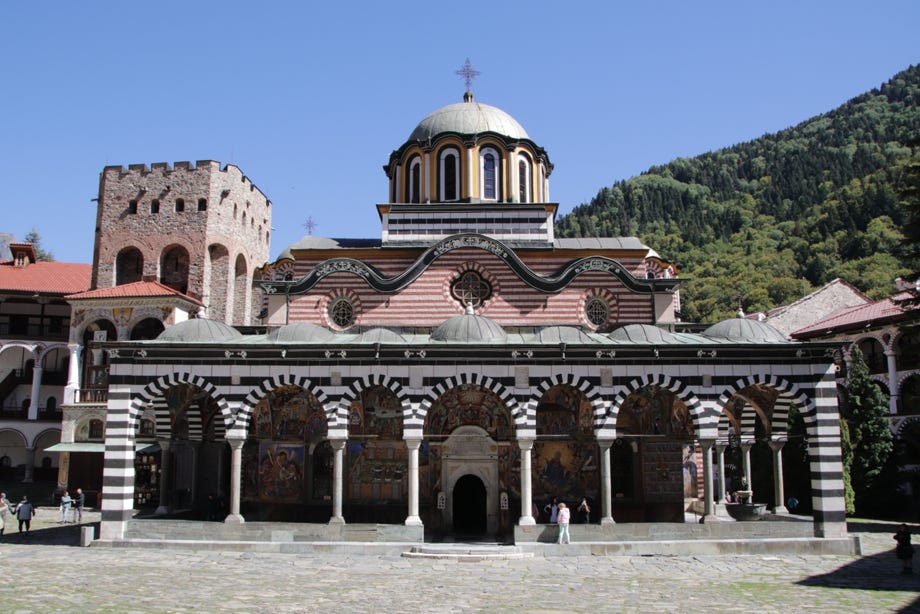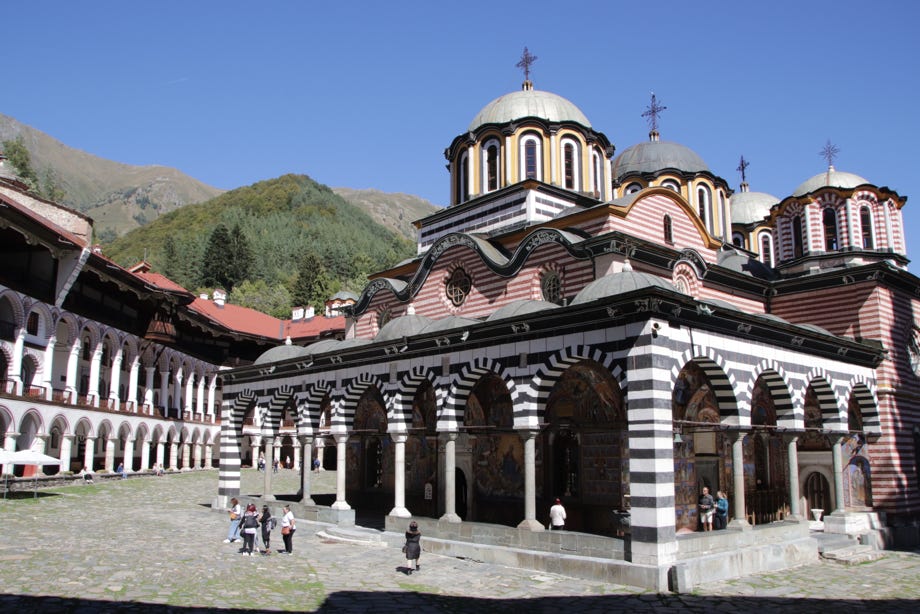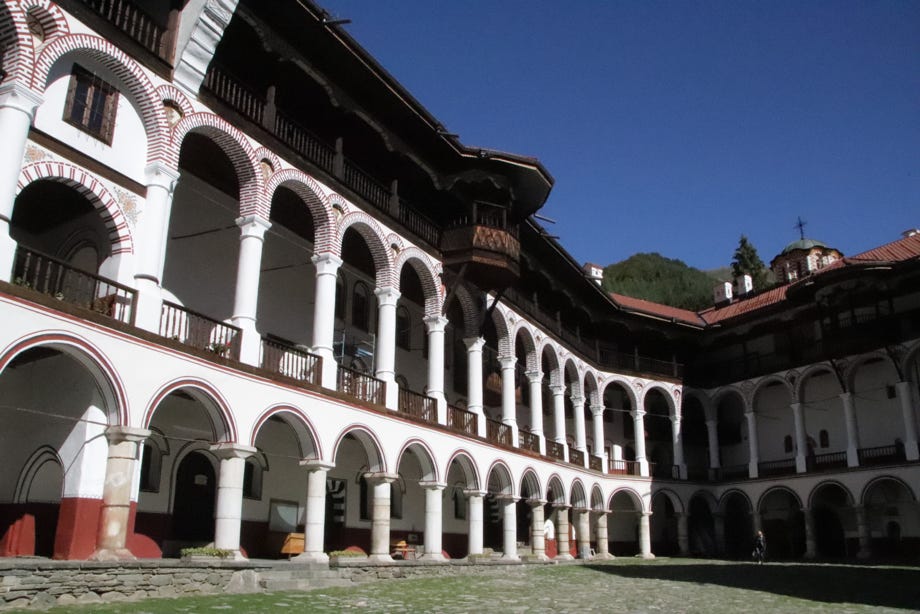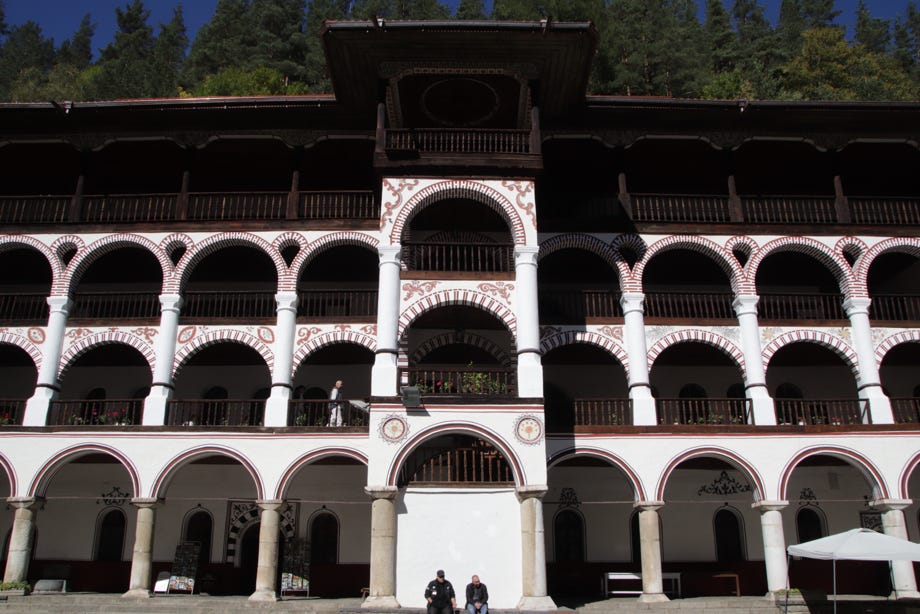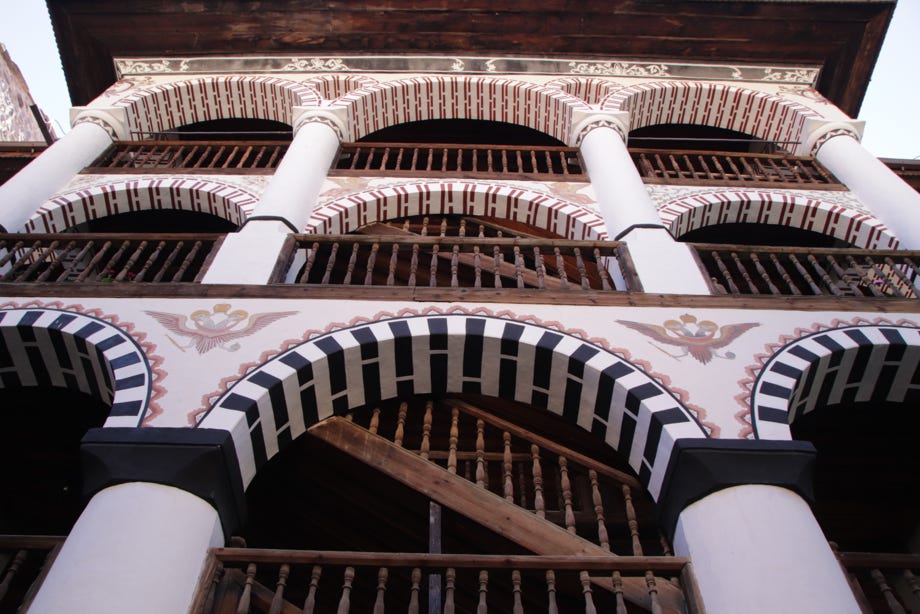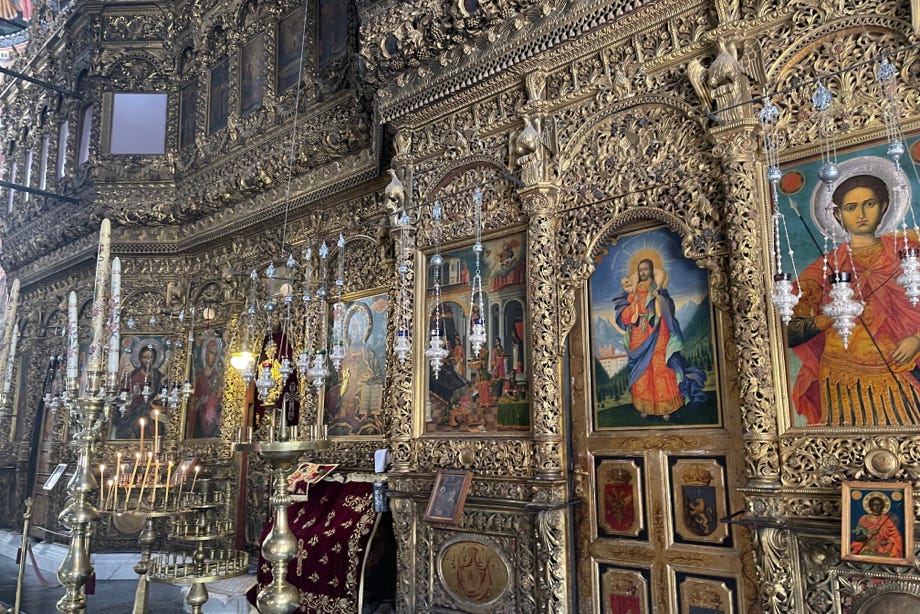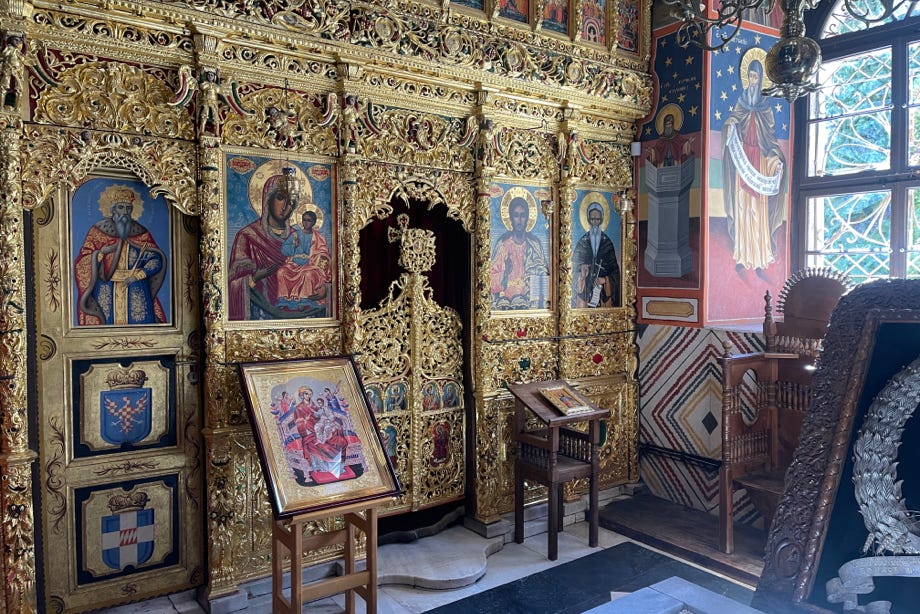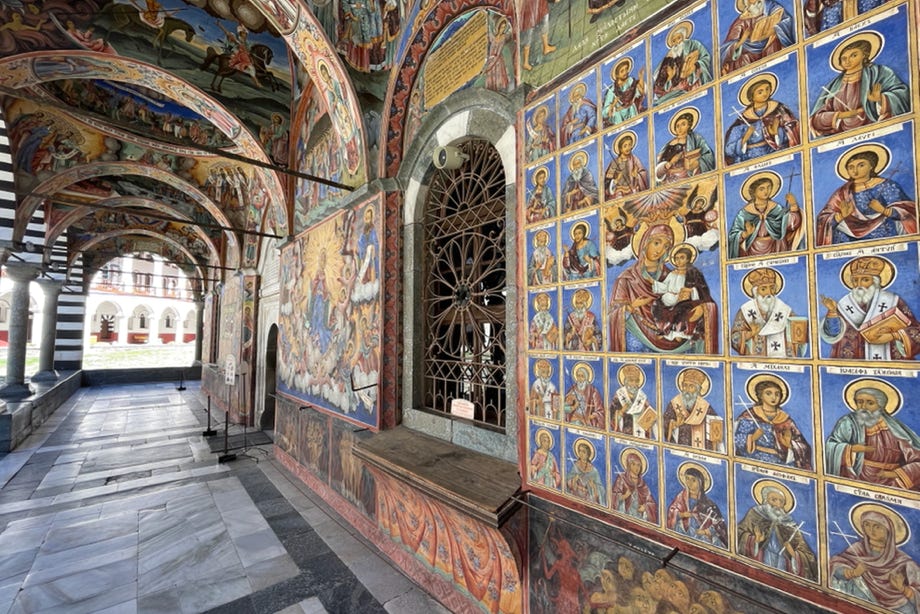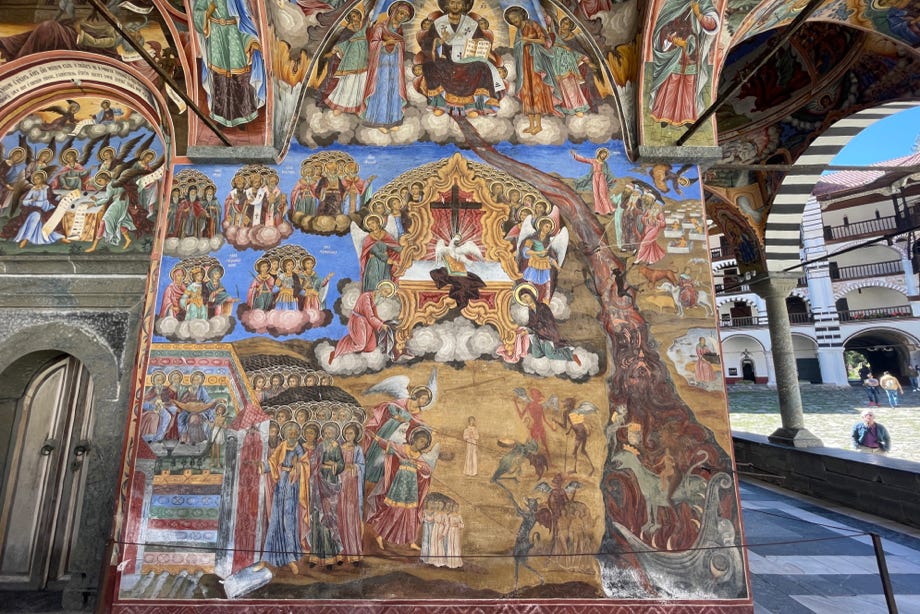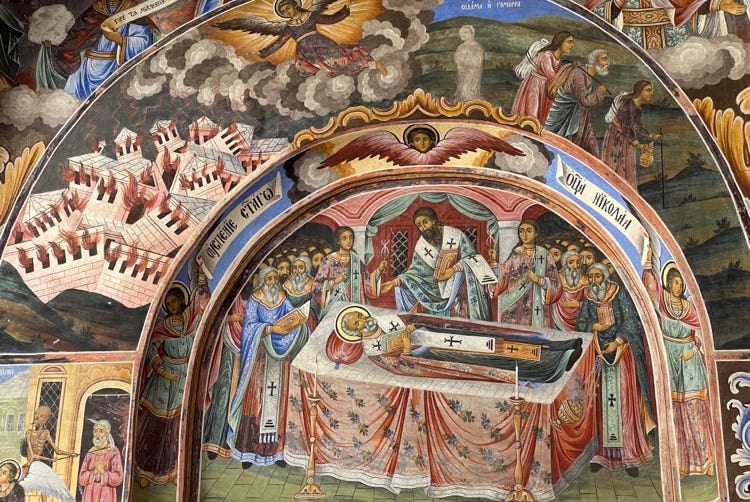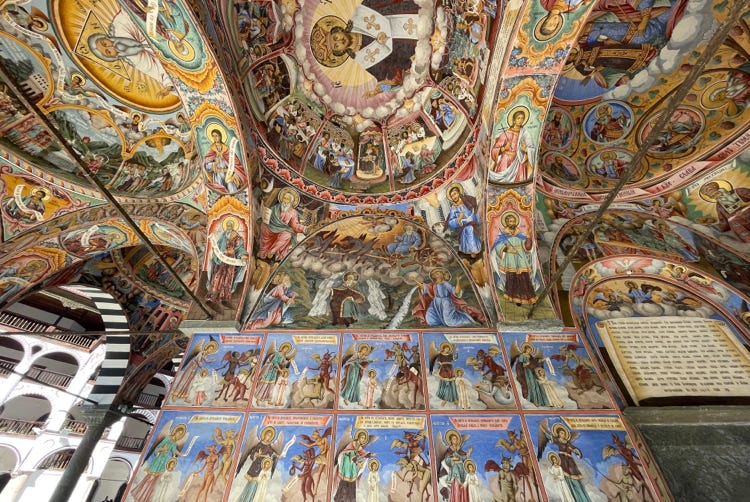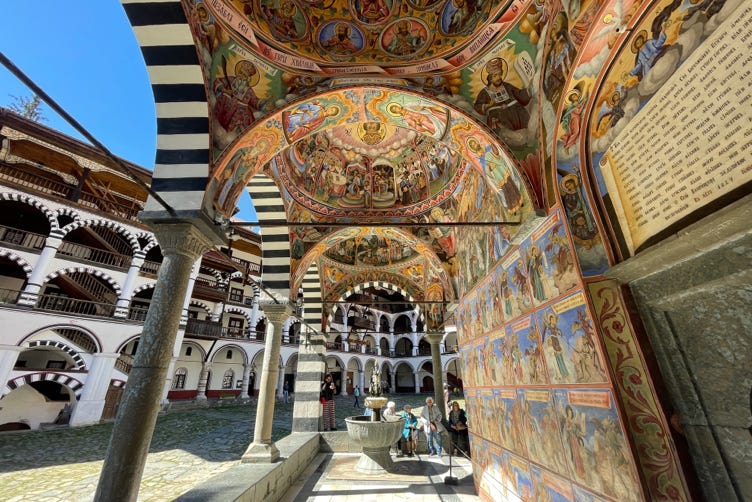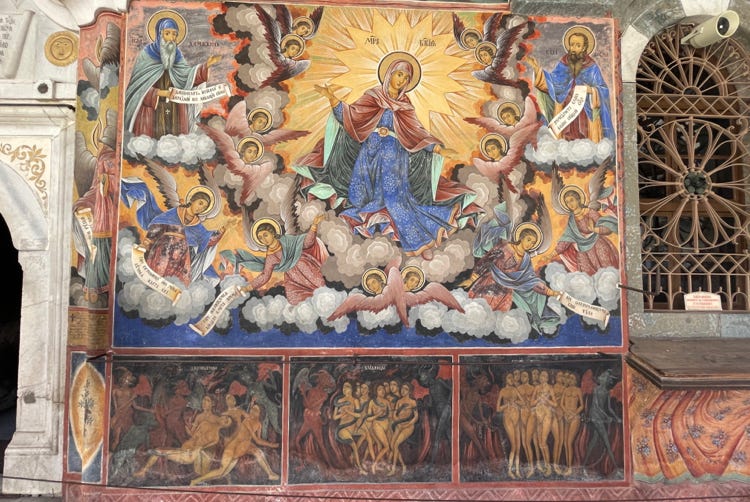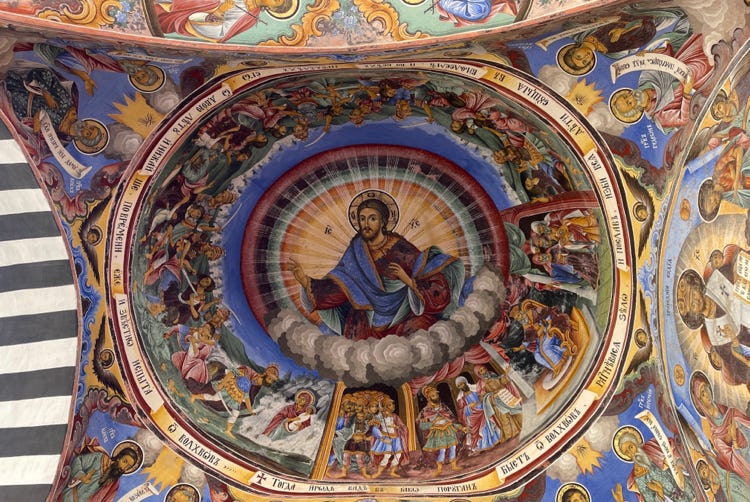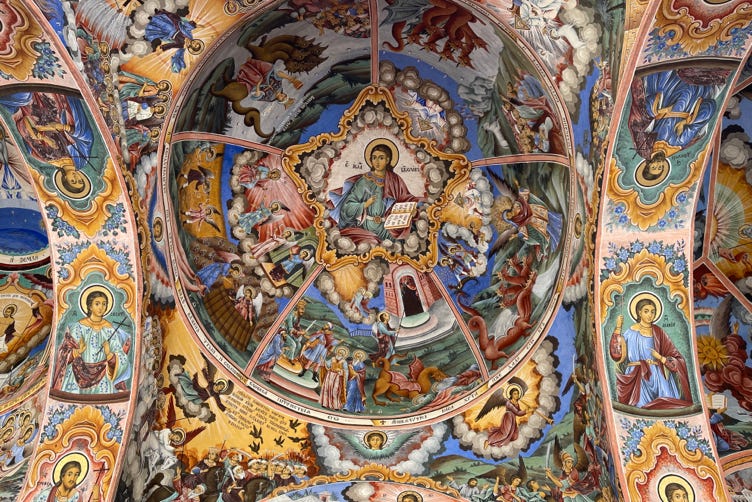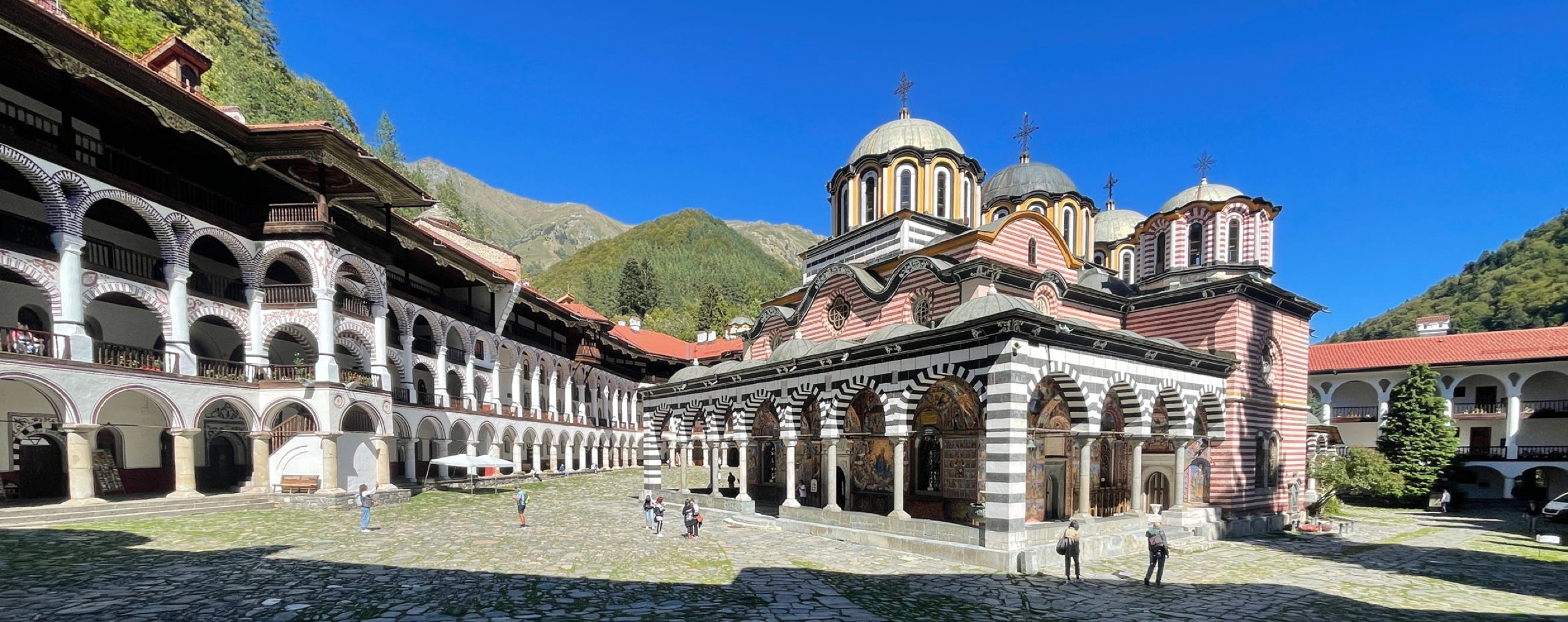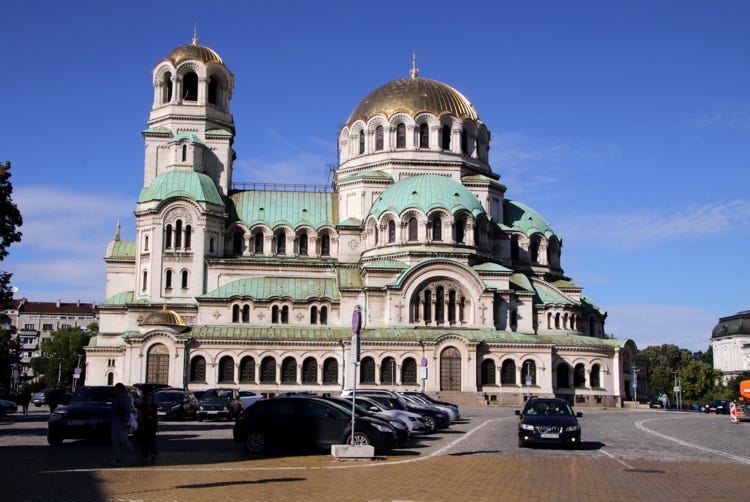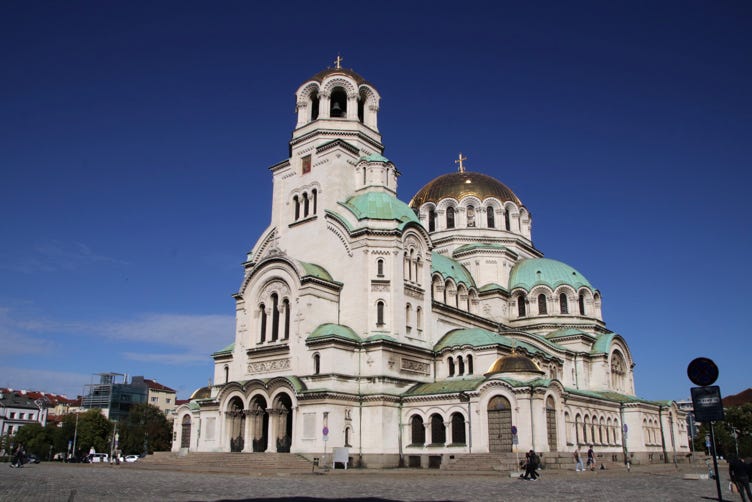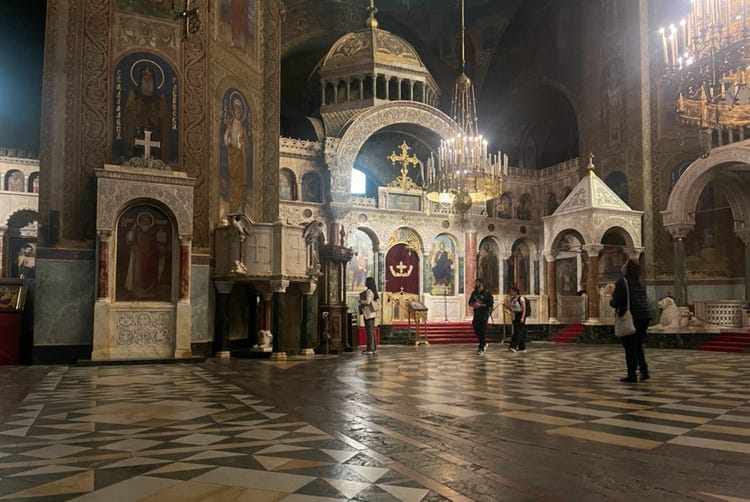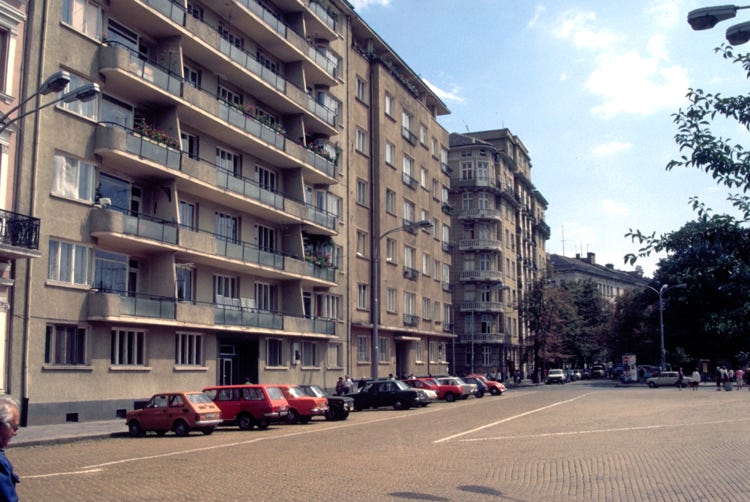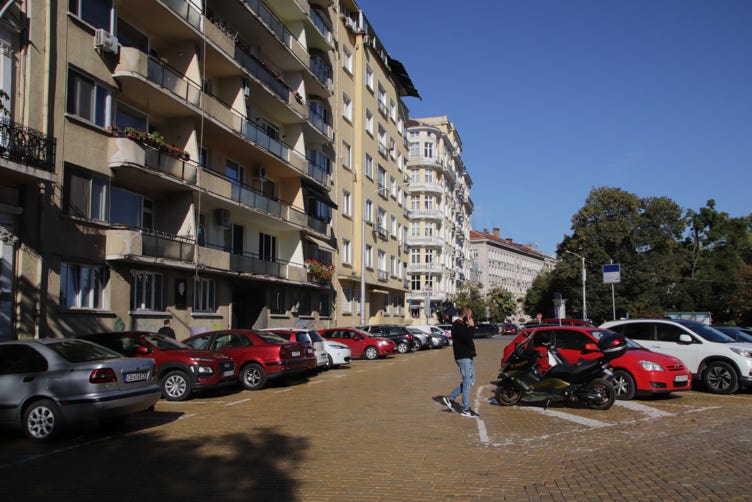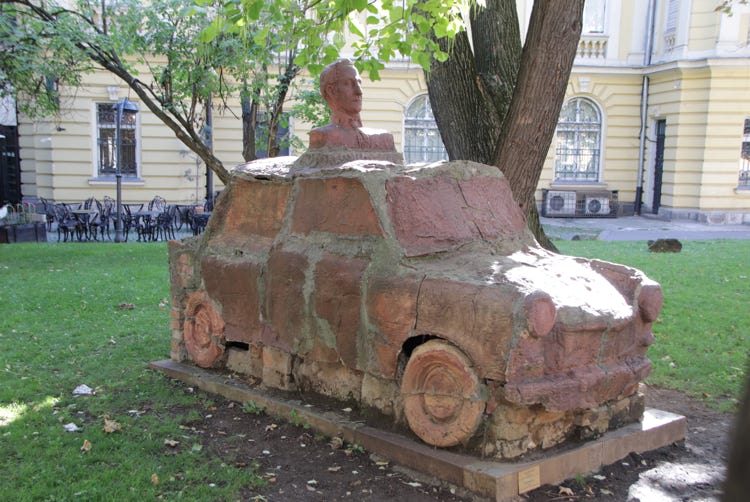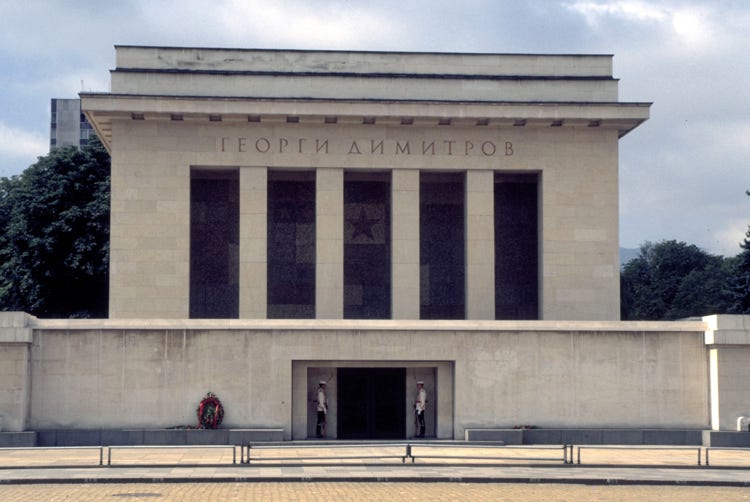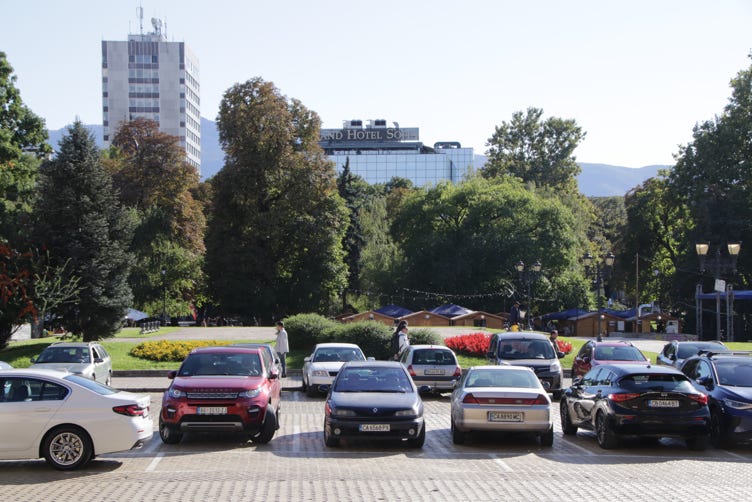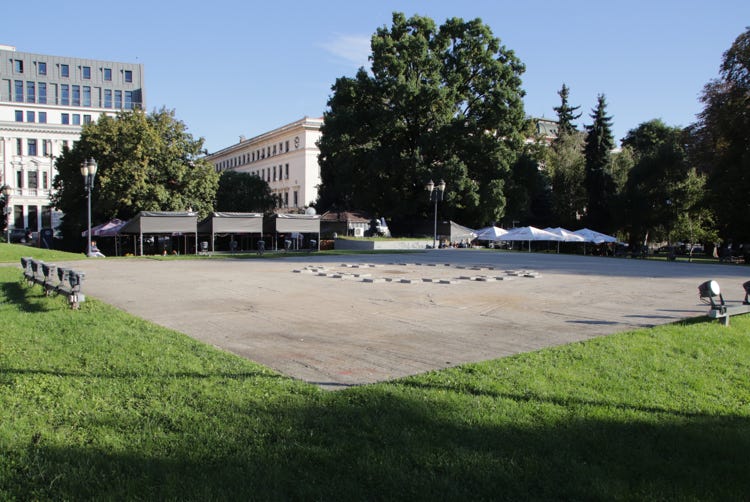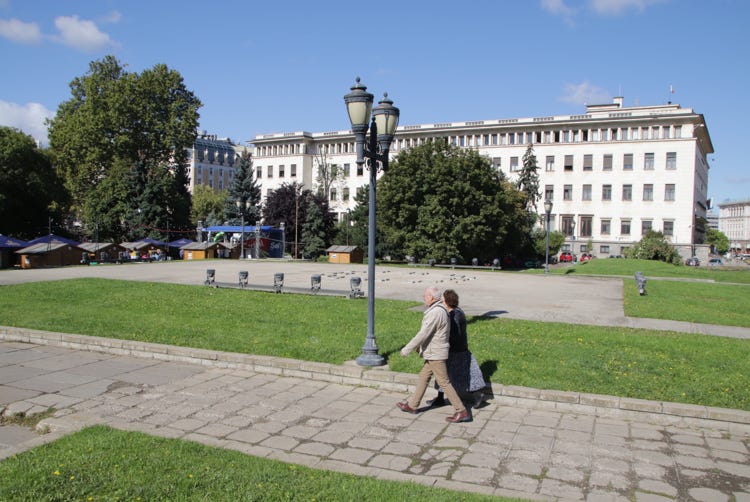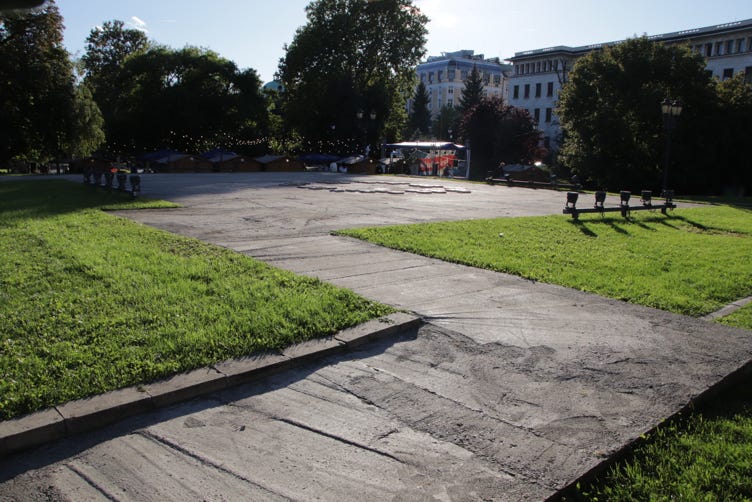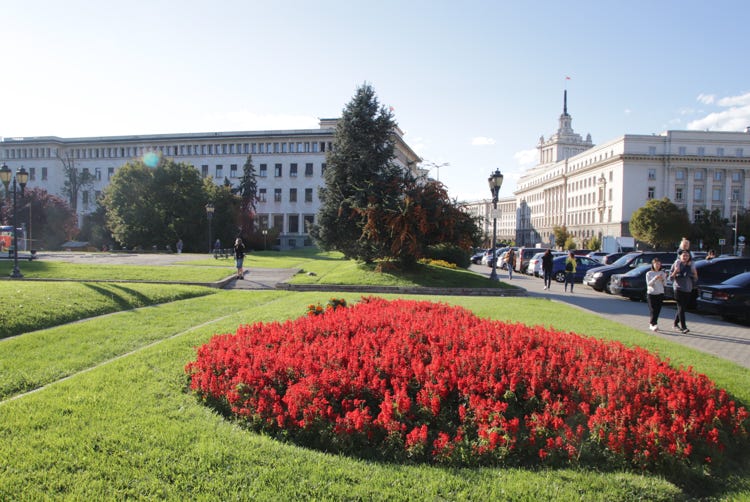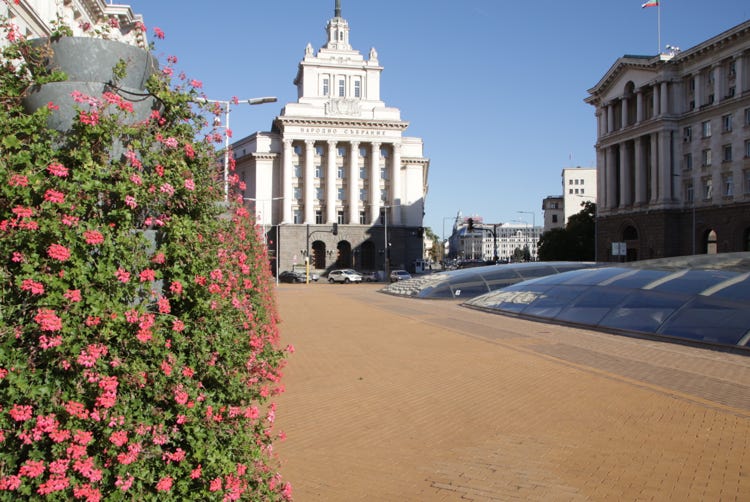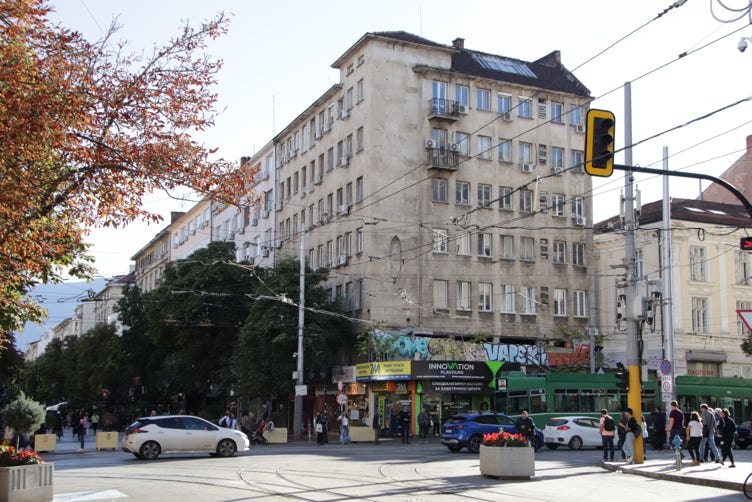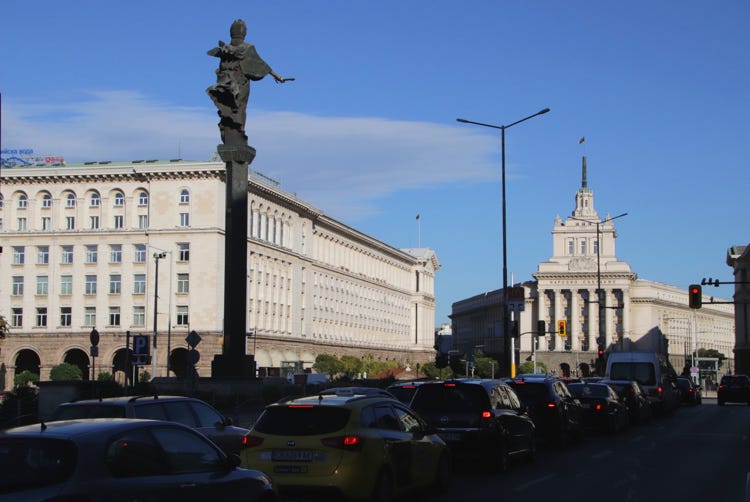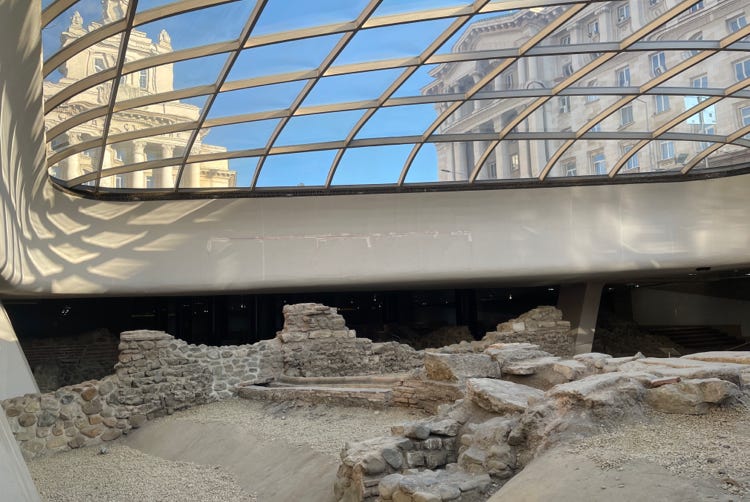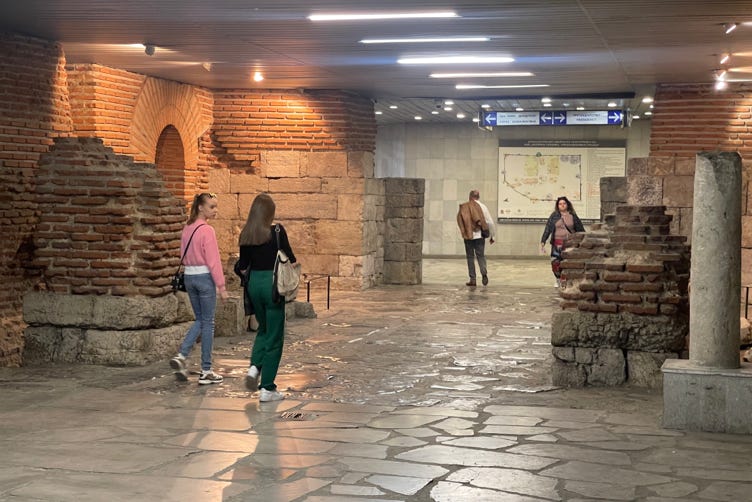
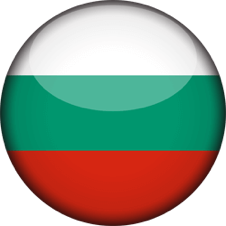
Rila and Sofia

Distance travelled = 243 kilometres driving by road and 8.6 kilometres walking (11,510 steps).
When travel books and websites portray key images of tourism in Bulgaria, Rila Monastery is invariably one of the images chosen or considered. Situated just 120 kilometres by road south of Sofia in the Rila Mountains, this Orthodox monastery rises up from the valley floor in a colourful mass of colours framed with bold black and white stripes and surrounded by steeply sided green hillsides. It’s just the kind of place where you want the sun to be shining and when you visit, and today didn’t disappoint. The weather was clear with bright blue sunny skies all day, the cold wind having blown away the clouds overnight. It was only 8°C until early afternoon, but the bracing conditions were refreshing in their own chilly kind of way.
My drive from Sofia to Rila began at 9:15am and took almost two hours, divided into four sections. The first section involved getting out of the city, a stop-and-start drive through multiple traffic lights, intersections and avoiding buses as would be expected in Monday morning traffic. The second section was on one of the best freeways I have ever experienced, an absolutely first rate road with a general speed limit of 120 kilometres per hour. The third section was a stark contrast; Route 1005 as it is known is a single lane (but two-way), poorly maintained road with far too many cars driving in the opposite direction at silly speeds cutting corners. The fourth and final section was a better maintained but still narrow two-laned road which was fine apart from the lack of places to overtake slow tourist buses.
I managed to arrive at the monastery before any of the tourist buses, and the quiet solitude at that time was perhaps the most pleasant part of my visit. It gave me time to explore the courtyard, surrounded by multi-storeyed buildings with cloistered verandahs that are the residential quarters for the monastery’s monks. Having completed a circuit of the courtyard, I focussed on the monastery’s main centrepiece, the Church of Rozhdestvo Bogorodichno, with its distinctive black-and-white striped archways and brightly coloured external frescoes.
The church is a relatively recent addition to the monastery, having been constructed from 1834 to 1837; the monastery itself was founded in 927AD. Interestingly, in 1961 Bulgaria’s Communist government proclaimed Rila Monastery a national museum, and 22 years later it was classified as a UNESCO World Heritage site.
The frescoes on the exterior walls and verandah ceilings were bright and colourful, and moreover exquisitely executed representations of Biblical stories, parables, saints and visions of heaven and hell. The paintings left no room for ambiguity regarding the glory of heaven for the multitudes of saints, but also the punishments in hell for sinners that frequently show demons gobbling them up whole or lassoing them to be cast into fire. I think that even the most illiterate peasant for whom the frescoes were designed will have understood the message.
The interior of the church was similarly magnificent although much less well illuminated. At the front of the church there is a large elaborate carved wooden iconostasis, and in the middle of the chapel hangs an absolutely huge golden chandelier adorned with the faces of Biblical saints.
The monastery is actually not very large (or at least the areas that visitors may enter are not large), and I had seen everything by the time the tour buses were arriving (about an hour after my arrival). However, I decided to linger for another hour and a half or so, partly to take everything in properly (especially the external frescoes, which really demanded some substantial study and reflection), and partly because the light was getting so much better compared with the harsh, contrasty conditions when I first arrived.
Having satisfied myself that I had satiated my appetite for frescoes, I returned to Sofia and arrived at about 4:00pm. The light was still fabulous, so I decided to head out to do some more walking around central Sofia.
I began my walk at the Aleksander Nevsky Orthodox Cathedral, located just a block to the north of my hotel. This huge building is a major landmark of Sofia, and is regarded by many as a symbol not only of the city but of Bulgaria as a nation. Interestingly, this was where we parked our car in 1987 when we stopped in Sofia for an hour or two during our day’s long from Plovdiv to Yugoslavia, and so a comparative photo pair appears below. In 1987 we didn’t go inside the church (it was firmly closed), but I did go inside this afternoon. It was huge, it was dark, it was cold, but it was decorated in the lavish style that typifies Orthodox churches.
Perhaps more interestingly (for me anyway), I had taken a photo on that trip in 1987 of a ‘typical’ housing block that I came across by chance near the Cathedral, which I immediately recognised today as I was walking west from the Cathedral along a street named Ulitsa Moskovska. My chance reacquaintance with that housing block presented another opportunity for a comparative photo pair.
I continued walking west along Ulitsa Moskovska and was surprised to see some interesting sculptures in a small park behind the Palace National Art Gallery, including some communist-era workers and peasant statues, and an obviously post-Communist sculpture of the iconic East German Trabant (a distinctive and infamous type of car) with a head protruding through its roof.
Then it was time for my third and final comparative photo pair. In 1987 I had taken a photo of Georgi Dimitrov’s mausoleum in 9th September Square, and I thought it would be a good idea to see what the site looked like now. Needless to say, the mausoleum is no longer there – it apparently took four attempts to blow up the building before it finally gave way (either communist cement was really solid, or their explosives were over-rated). Looking closely, I could see that the concrete foundation is still there in the park as a blank concrete slab, but a garden has been built in front of the site to set it back a little from the street. It’s interesting (to me) that the concrete slab remains there for all to see 23 years after the mausoleum was demolished.
My walk continued westwards through Sveta Nedelya Place past the Sveta Nedelya Church, into Vitosha Boulevarde where the huge Sofia City Court Building made an impressive backdrop to the multitudes of trams passing through. Reversing direction as I started to head back east to my hotel, I found myself in a tunnel beneath Nezavisimost Place where I came upon an expectedly amazing site – the excavated ruins of ancient Serdica.
Long before modern Sofia existed, a Roman settlement known as Serdica existed on the site during the 3rd to the 6th centuries. Several areas of excavations have been opening up in recent years, and the area I came across contained the foundations of buildings together with several pieces of stone artwork. The excavations are quite well displayed, and the area I saw this afternoon had been integrated into an underground street crossing and meeting hall.
All-in-all, the day turned out to be significantly more diverse than I had planned when I thought I would be spending most of it in a monastery.

